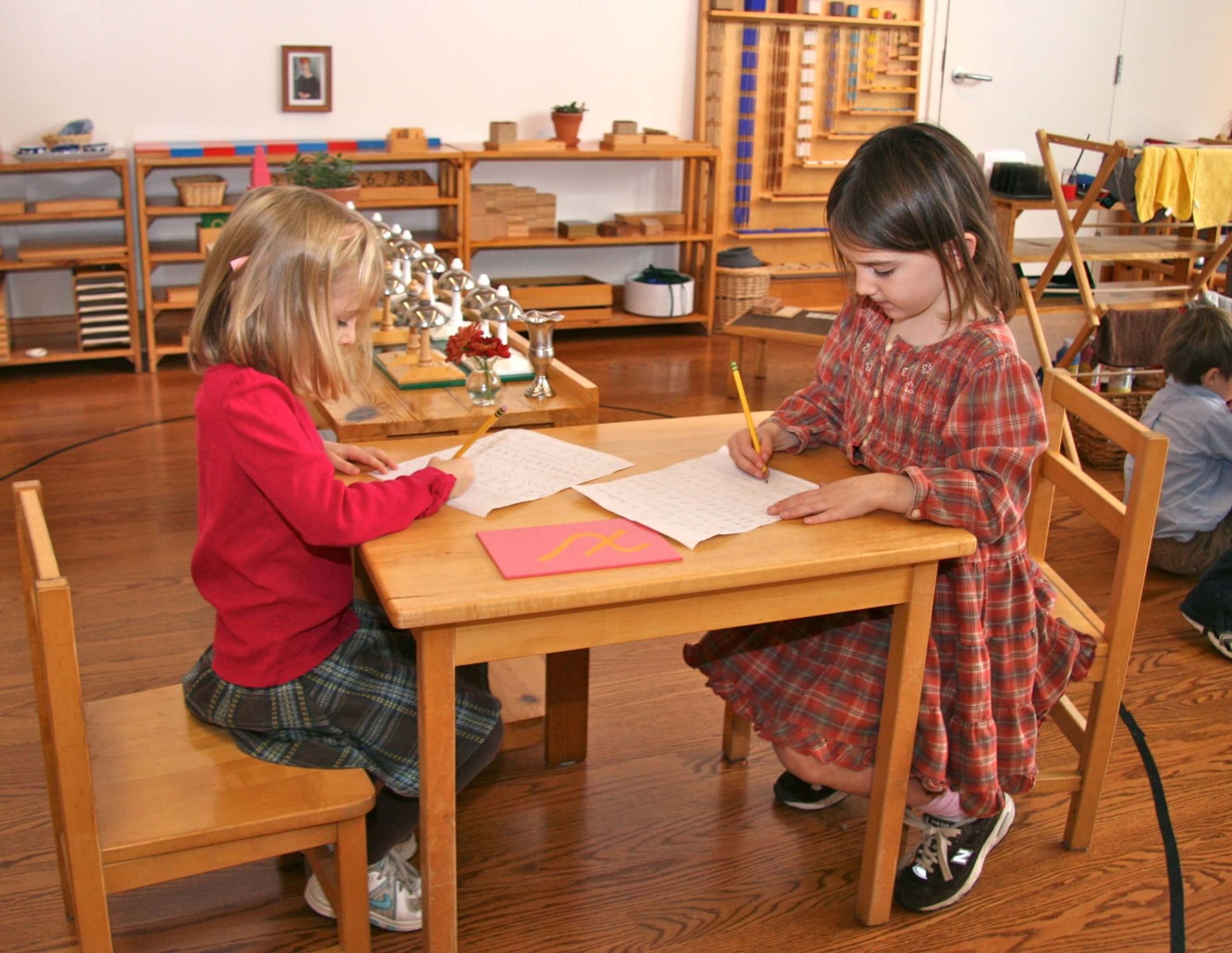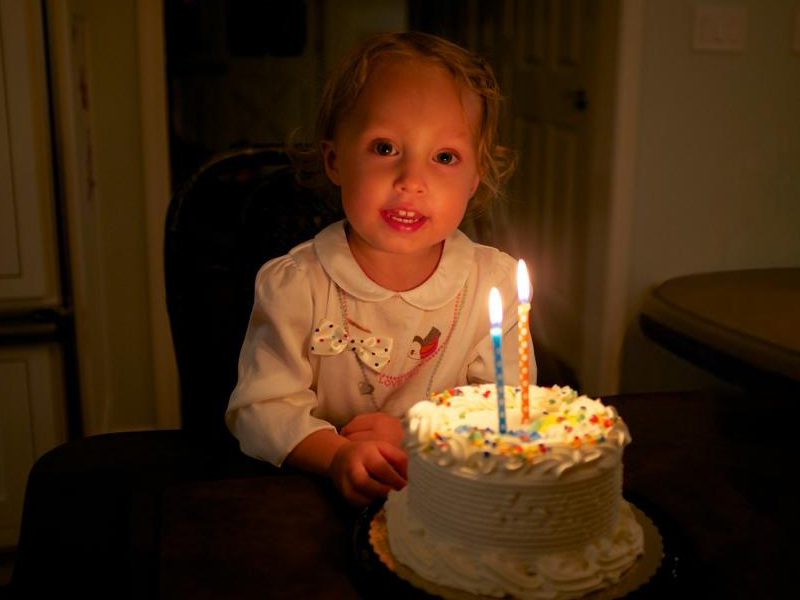
Music Lifts Us Up!
Those of us working in Forest Bluff’s office often feel separated from the life of the classrooms during this time of COVID restrictions because we cannot open the doors to see the children working. But one thing has warmed our hearts every single day: the sound of music coming from everywhere. Children are always singing or playing the bells or the tone bars, every day. In this way, original musical expression is the backdrop to the Montessori classrooms.
Our children experiment with melodies as a way to learn about humanity and articulate their understanding of the environment. Music is fun, but it is also a launching point to explore physics, history, language, geography, and arithmetic. Music also involves group coordination, executive functioning, and compromise; this is required to organize a performance, which some of our brave upper elementary children decided to tackle, earlier this year.
Music is an important and vital part of our lives. However, it’s easy to overlook its value in children's education. We admit that even in a Montessori school that follows an education designed to integrate all aspects of life, we often have much more left to teach in the extensive Montessori music curriculum. In a society that prizes educational topics such as mathematics, language, and science, music can be thought of as an extra, less necessary, part of schooling.
But because all subjects are interdependent, both in life and in the Montessori approach, we spend time exploring the significantly worthwhile language of music: its mechanics and its context. Every aspect of musical study has many links to other topics. Making these connections enriches the lives of the children, their outlook on human history, and their understanding of sound and music physically, intellectually, and spiritually. Music is good for our souls. It helps us work through emotions, lifts our moods, and gives us a sense of close connection to our fellow human beings!
Music in the Classroom: Silence, Movement, and Imagination
Dr. Montessori took the time to point out the value of music in all aspects of our lives. One of the most important elements of her approach is the emphasis on silence and its important role. Young children develop an awareness of the role silence plays in their teachers' instructive presentations, where their expressions and movements are highlighted by the absence of talking. Being silent also requires each child to exercise self-control. Montessori’s “Silence Game,” which is a simple meditation in silence, points to the relationship of silence to the sounds we make when we move our bodies.
Children develop intense concentration when working with and creating music, because controlling their movements is challenging for them. The bells and the tone bars are music materials that elicit hours of focus and flow state concentration. When children have the opportunity to work in a state of flow, the mental faculties associated with concentration are strengthened. Concentrating on music is practice that makes it easier for children to concentrate on other important developmental tasks through their education and life experiences.
Montessori education also emphasizes movement's connections to music and the brain. Movement is imperative for children's psychological and physical development in all stages. Precision of movement is inherent in every presentation of physical materials at every age level. Movement requires body coordination and control, rhythm and tempo, especially in music presentations. Creating one’s own musical movement is encouraged when children as young as four years old are shown how to make up their own compositions on the bells. This gives them an enjoyable, exploratory relationship with musical expression from an early age. In their elementary years, children are shown how to make simple instruments to encourage a scientific exploration of sound. Children also learn to study the mathematical relationship of tone when music is given with the bells and tone bars. We introduce the history of music, composers and inventors, movements in style and migrations of ideas, as a field to consider in all areas of their classroom work.
In typical Montessori fashion, music presentations vary depending on the developmental characteristics typical of their age. For the younger children, music presentations progress from the most fundamental and basic, where we begin with body control, listening and analyzing sound, to the more detailed and finite areas of music study. For the elementary-aged children, who are driven by their imaginations and abstract thinking, music is introduced through stories of history, arithmetic relationships, and purposeful work. The child is given the context of music as a whole first by integrating it throughout our day and telling stories of its origins, before zooming into the particular details using nomenclature cards, music notation, and studying specific artists, composers, and historical works. This detailed breakdown of the component parts is known as “isolation of difficulty.” The child can then focus on one aspect at a time of a complex whole, before putting it all together to understand greater purpose and meaning in their work.
Further Exploration in the Elementary: Studying History and Designing Instruments
When developing the concept of a well-rounded education, the Greeks considered music to be arithmetic calculated in time, while geometry was arithmetic calculated in space. The Greeks knew that music was key to unlocking human potential, and so did Maria Montessori. By learning of the connections between music and human culture, children become part of a larger conversation that has been going on thousands of years regarding what music is and how it seems to connect us across vast barriers in time and space. While the connections to historical time periods and human culture can easily be introduced through stories of music’s past, the mathematical connections are best demonstrated through a tool first described in early Sumerian writings and later reinvented by Pythagoras, the Greek philosopher, geometer and mathematician.
This tool is called a monochord and is something older children can make in class to show the harmonic relationships of rational numbers such as 12, 13, and 14. The monochord is a single string stretched across a hollow box. By depressing the chord at the halfway point, the child is able to pluck the string and produce a note exactly one octave higher than if the string were plucked in the open position. When they depress the string exactly halfway between the midpoint and the end, another octave is discovered. When the children begin to make the connection between distance along the string and tonal relationships, the world of music and mathematical relationship elegantly intertwine. This leads to activities in measurement, proportion, ratio, fraction operations, number theory, and so much more. It shows the child that beauty is latent in all things and all it takes is structured exploration for it to be discovered; recognition of beauty will motivate further exploration and concentrated effort throughout their life.
Music for Social Development
Last holiday season, some elementary children at Forest Bluff decided to put together a group performance of three festive songs with the tone bars, bells, and an assortment of handmade percussion instruments. They laboriously deliberated over the choice of songs, conducted numerous processes to determine each of the six participants’ parts, and then practiced it towards perfection. It is no easy task for six elementary children to self-organize a band and perform for their peers in only a few days. There were technical challenges, scheduling miscommunications, interpersonal obstacles, and yet, they cared so much about their work that they together overcame.

All of these adversities are ones that are common for adults to encounter when working collaboratively and they must be overcome when people are working to contribute meaningfully in society. The children delegated responsibilities and trusted each other to share control of the outcomes. While one team listened to the songs on a CD and transcribed the music onto staff paper, others made and organized the instruments, and another group wrote invitation letters to the classrooms. The collaboration and compromise required in this type of work encompasses so many soft skills that are critical to success working with others.
As our world becomes more and more specialized, the importance of effective communication and teamwork is a key differentiator between teams and individuals that are successful and those that are not. Had these children not had all of the preliminary explorations of the tone bars, bells, musical notation, and historical inspiration, they most definitely would not have had the courage to take on such an endeavor as difficult as a musical concert performance. And in turn, they would not have had the opportunity to concentrate so deeply on their work. Taking these risks develops confidence and inspires concentration in the child that they will use in important ways throughout their life. Being free to choose work that excites them and having presentations on the component parts of musical expression, the children have the opportunity to grow in ways that prepare them for a meaningful and successful life.
Reaping the Benefits
Not all Montessori students will go through the entire music curriculum. But we hope that demonstrating here what value our music curriculum has will inspire parents to encourage their child’s exploration of music, in and out of the classroom. When speaking to your children about music, appreciate how it enriches their lives and helps them in their individual and social development. Just as giving our young children a rich language environment helps them to develop their vocabulary and ability to speak well, giving our children a rich musical environment helps them to develop their gratitude for–and ability to communicate through–musical expression.
Music has been a part of human life since language has, perhaps even before. It is primal and fundamental. It is the prose of human emotion, which every person needs an opportunity and tools to express. Music, as introduced in Montessori, is a hub through which the child develops themselves into a whole and rounded human being: capable and confident of their capabilities because they see how things connect and work together.
As AMI Montessori trainer, Maria Teresa Vidales, said, “Music can touch us in a way that nothing else can. No better gift can we give to the child than to open this door within [them].”


